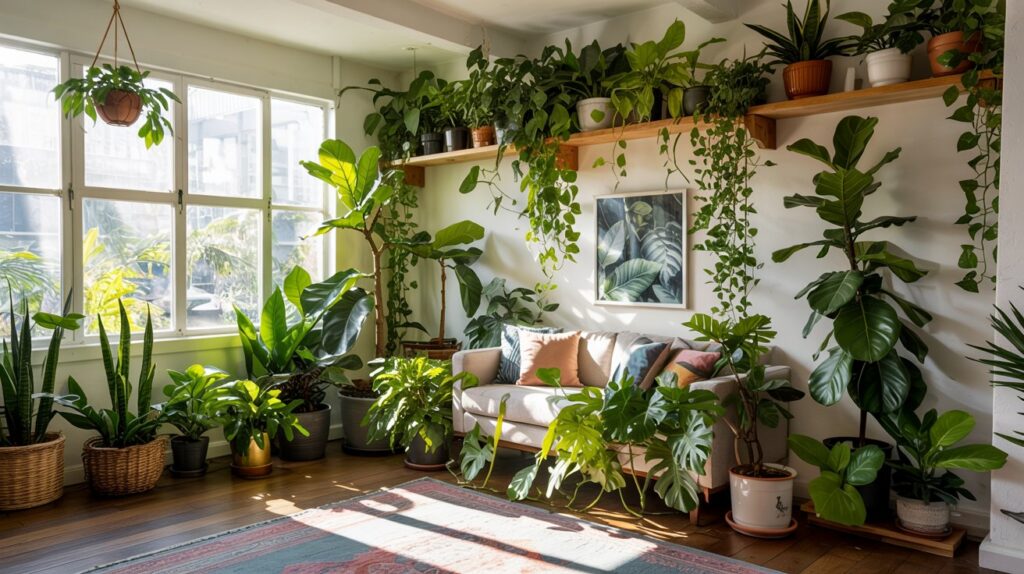The air we breathe inside our homes plays a crucial role in our daily health and well-being, yet most people don’t give indoor air quality much thought until problems arise. Hidden sources of indoor pollution-everything from cooking vapors and household cleaners to dust mites and pet dander-quietly accumulate in our living spaces, potentially affecting our comfort and health over time. The good news? You don’t need to gut your house to breathe easier. Straightforward approaches like improving ventilation, maintaining a regular cleaning routine, and incorporating tools such as air purifiers can dramatically transform your home’s air quality and create a healthier environment for your family.
Understanding Indoor Air Quality
Indoor air quality (IAQ) describes the condition of air inside buildings and how it affects the health and comfort of those who live there. Multiple factors shape IAQ, from how well your home is ventilated and humidity levels to the types and amounts of pollutants present. When indoor air quality suffers, certain groups feel the effects more acutely-children, older adults, and anyone dealing with respiratory issues like asthma or allergies face heightened risks.
Common Indoor Air Pollutants
Knowing what’s contaminating your indoor air is half the battle. The usual suspects lurking in most homes include:
- Dust and allergens that drift in from outdoors or shed from fabrics, carpets, and furnishings
- Mold and mildew that flourish in humid spots like bathrooms, basements, and poorly ventilated areas
- Volatile organic compounds (VOCs) that off-gas from paints, furniture, carpeting, and cleaning supplies
- Pet dander from our beloved cats, dogs, and other furry family members
- Smoke and cooking fumes generated by kitchen activities and tobacco use
These contaminants stem from routine household activities, the materials used to build and furnish our homes, and outdoor air that seeps inside through various entry points.
Practical Strategies to Improve Indoor Air Quality
Ventilation and Airflow
Good ventilation serves as the cornerstone of healthy indoor air. When weather allows, crack open those windows-fresh outdoor air naturally dilutes indoor pollutants and gives your home a breath of fresh air, literally. Make exhaust fans your allies in kitchens and bathrooms, where they capture moisture and contaminants right at the source. Even during winter months, allowing brief exchanges of fresh air can work wonders for air quality without sending your energy bills through the roof.
Reducing Pollutant Sources
The smartest way to tackle indoor air pollution is to stop it before it starts:
- Opt for low-VOC or VOC-free paints, adhesives, and cleaning products when possible
- Stick to regular cleaning schedules to keep dust and allergens from building up
- Jump on moisture problems quickly-mold doesn’t wait around to establish itself
- Keep chemicals and cleaning supplies stored in well-ventilated spots
- Vacuum regularly using a machine equipped with a HEPA filter to trap the smallest particles
The Role of Air Filtration
Air filtration systems excel at capturing airborne particles and contaminants that other methods might miss. HEPA (High-Efficiency Particulate Air) filters work like microscopic nets, trapping particles as tiny as 0.3 microns-that includes dust, pollen, and even some bacteria. For odors and chemical vapors, activated carbon filters are the heavy lifters. Air purifiers that combine these filtration technologies can be game-changers, especially in homes where natural ventilation is limited or specific air quality challenges persist.
Houseplants and Natural Solutions
Houseplants certainly brighten up indoor spaces and can contribute to a more pleasant atmosphere, but their reputation as air-purifying powerhouses has been somewhat exaggerated. While plants like spider plants and peace lilies can remove trace amounts of certain pollutants, research shows they’re not particularly effective air cleaners under real-world home conditions. Think of them as a nice bonus rather than your primary air quality strategy.
Monitoring and Maintaining Healthy Air
How to Assess Indoor Air Quality
Sometimes your senses tell you everything you need to know about your home’s air quality. Lingering odors, visible mold growth, dust that seems to reappear moments after cleaning, or family members experiencing more allergy symptoms than usual can all signal underlying issues. A simple humidity meter helps you maintain that sweet spot of 30-50% moisture, while modern air quality monitors can provide real-time readings on particles and chemical pollutants floating through your home.
Ongoing Maintenance Tips
Keeping your air clean isn’t a one-and-done deal-it requires consistent attention to detail:
Key Takeaway Box:
– Swap out HVAC and air purifier filters according to manufacturer guidelines
– Plan seasonal deep cleans for carpets, upholstery, and air duct systems
– Keep exhaust fans and ventilation systems clean and functioning properly
– Tackle water leaks and moisture problems the moment you discover them
Creating Your Healthier Home Environment
Achieving excellent indoor air quality demands ongoing effort, but the payoff-fewer allergy flare-ups, more restful sleep, and better respiratory health-makes every step worthwhile. Begin by taking stock of your current indoor environment, then tackle improvements that make sense for your specific situation and living space. Remember, small but consistent efforts often deliver better long-term results than sporadic major overhauls. By taking action today, you’re making an investment in your family’s health and comfort that will pay dividends for years to come.

